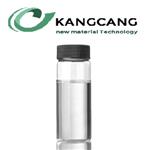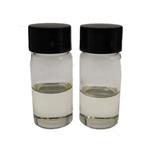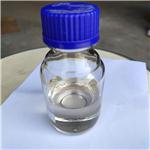Acrylonitrile-Health Hazard and Toxicity
Sep 4,2019
Description
Acrylonitrile is an organic compound with the formula CH2CHCN. It is a colorless volatile liquid, although commercial samples can be yellow due to impurities. In terms of its molecular structure, it consists of a vinyl group linked to a nitrile. It is an important monomer for the manufacture of useful plastics such as polyacrylonitrile. It is reactive and toxic at low doses.

Health Hazard
Acrylonitrile is classified as moderately toxic by acute exposure through oral intake, skin contact, and inhalation. Symptoms of exposure include weakness, lightheadedness, diarrhea, nausea, and vomiting. Acrylonitrile is severely irritating to the eyes and mildly irritating to the skin; prolonged contact with the skin can lead to burns.
Acrylonitrile is mutagenic in bacterial and mammalian cell cultures and embryotoxic/ teratogenic in rats at levels that produce maternal toxicity. Acrylonitrile is carcinogenic in rats and is regulated by OSHA as a carcinogen (29 CFR 1910.1045). Acrylonitrile is listed in IARC Group 2A ("probable human carcinogen") and is classified as a "select carcinogen" under the criteria of the OSHA Laboratory Standard.
Toxicity
Acrylonitrile is classified as moderately toxic by acute exposure through oral intake,skin contact, and inhalation. Symptoms of exposure include weakness,lightheadedness, diarrhea, nausea, and vomiting. Acrylonitrile is severely irritating to the eyes and mildly irritating to the skin; prolonged contact with the skin can lead to burns.
Flammability and Explosibility
Highly flammable liquid (NFPA rating = 3). Vapor forms explosive mixtures with air at concentrations of 3 to 17% (by volume). Hazardous gases produced in fire include hydrogen cyanide, carbon monoxide, and oxides of nitrogen. Carbon dioxide or dry chemical extinguishers should be used to fight acrylonitrile fires.
Reactivity and Incompatibility
Violent reaction may occur on exposure to strong acids and bases, amines, strong oxidants, copper, and bromine. Violent polymerization can be initiated by heat, light,strong bases, peroxides, and azo compounds.
Storage and Handling
Because of its carcinogenicity and flammability, acrylonitrile should be handled using the "basic prudent practices" of Chapter 5.C, supplemented by the additional precautions for work with compounds of high chronic toxicity (Chapter 5.D) and extremely flammable substances. In particular, work with acrylonitrile should be conducted in a fume hood to prevent exposure by inhalation, and splash goggles and impermeable gloves should be worn at all times to prevent eye and skin contact. Acrylonitrile should be used only in areas free of ignition sources.
Containers of acrylonitrile should be stored in secondary containers in the dark inareas separate from oxidizers and bases.
Accidents
In the event of skin contact, immediately wash with soap and water and remove contaminated clothing. In case of eye contact, promptly wash with copious amounts of water for 15 min (lifting upper and lower lids occasionally) and obtain medical attention. If acrylonitrile is ingested, obtain medical attention immediately. If large amounts of this compound are inhaled, move the person to fresh air and seek medical
attention at once.
In the event of a spill, remove all ignition sources, soak up the acrylonitrile with a spill pillow or absorbent material, place in an appropriate container, and dispose of properly. Evacuation and cleanup using respiratory protection may be necessary in the event of a large spill or release in a confined area.
Disposal
Excess acrylonitrile and waste material containing this substance should be placed in an appropriate container, clearly labeled, and handled according to your institution's waste disposal guidelines.
- Related articles
- Related Qustion
- Acrylonitrile - a Brief Introduction Apr 27, 2022
Acrylonitrile, also known as AN or vinyl cyanide, is a man-made VOC. It is a pungent smelling, colorless flammable liquid.
- Uses of Acrylonitrile Oct 25, 2021
Acrylonitrile is an organic compound with the formula CH2CHCN. It is a colorless volatile liquid although commercial samples can be yellow due to impurities. It has a pungent odor of garlic or onions.[4] In terms of its molecular structure,
Acrylamide (or acrylic amide) is an organic compound with the chemical formula CH2=CHC(O)NH2. It is a white odorless solid, soluble in water and several organic solvents. It is produced industrially as a precursor to polyacrylamides, which....
Sep 4,2019Chemical ReagentsAluminium chloride (AlCl3), also known as aluminium trichloride, is the main compound of aluminium and chlorine. It is white, but samples are often contaminated with iron(III) chloride, giving it a yellow color. The solid has a low melting....
Sep 4,2019APIAcrylonitrile
107-13-1You may like
- How to synthesize Benzyl vinylcarbamate?
Mar 26, 2024
- Polypropylene and Polyvinyl chloride: Which one is better?
Mar 21, 2024
- How to synthesize Isoprene?
Mar 20, 2024
- Acrylonitrile
-

- $20.00/ kg
- 2024-04-26
- CAS:107-13-1
- Min. Order: 1kg
- Purity: 98%
- Supply Ability: 20
- Acrylonitrile
-

- $9.00 / 25kg
- 2023-12-25
- CAS:107-13-1
- Min. Order: 1kg
- Purity: 99.5%
- Supply Ability: 200000
- Acrylonitrile
-

- $0.00 / 1KG
- 2023-09-06
- CAS:107-13-1
- Min. Order: 1KG
- Purity: 99%
- Supply Ability: 500000kg




